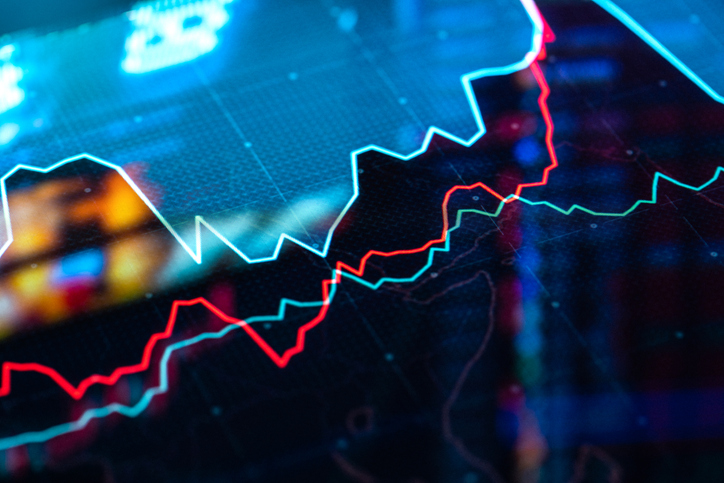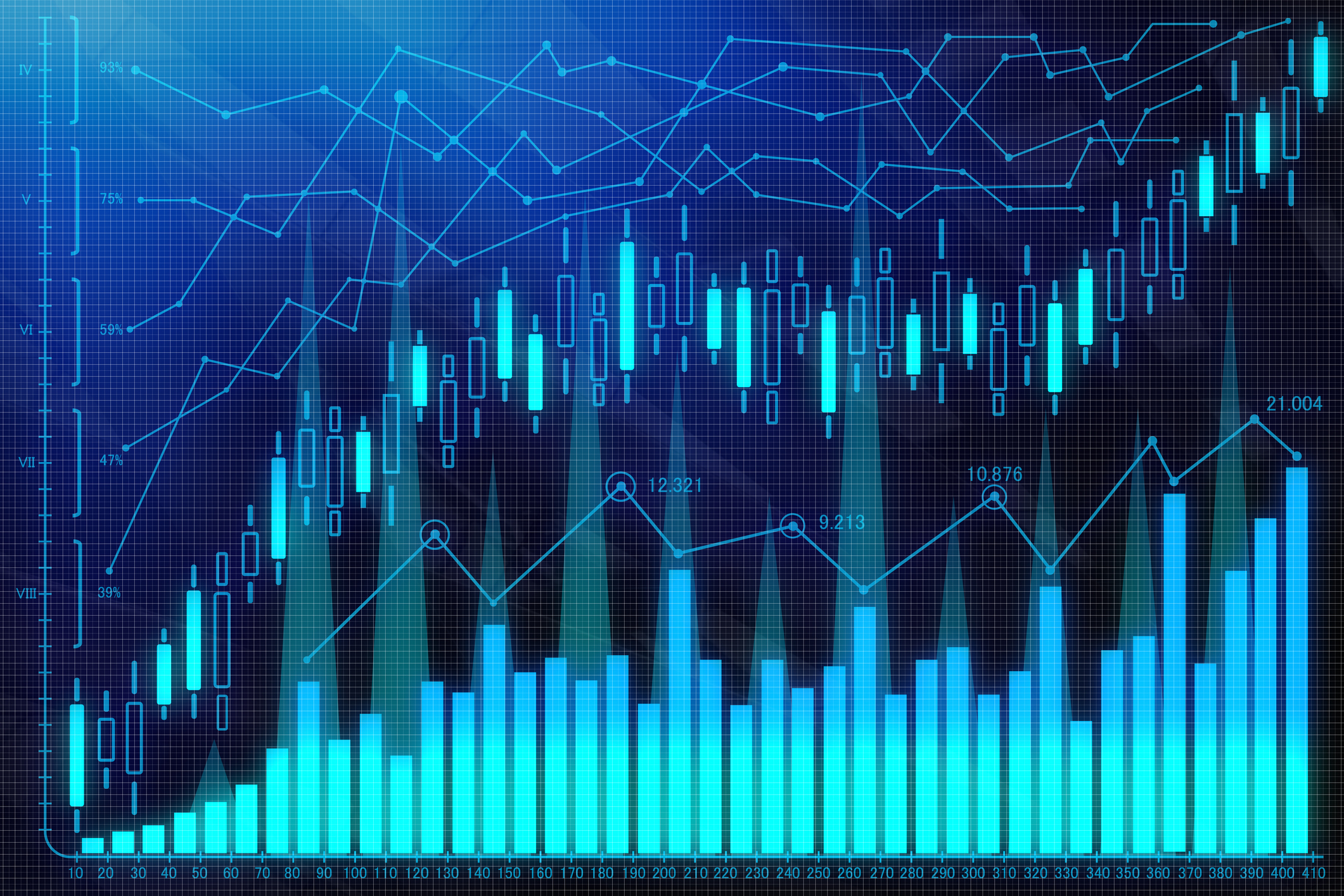4 Tips to Buy Stocks Low
You need to train yourself to see declines in the stock market as opportunities, not as calamities.

Shoppers love bargains, except when it comes to stocks. When a stock’s price falls sharply, few investors react with giddiness at the prospect of getting something for less. More likely—especially if they already own the stock—they respond with anxiety or cold fear. Rather than buy the stock, they’re more apt to sell it.
Certainly, there are valid reasons for stocks to lose value, but you need to train yourself to see such declines as opportunities, not as calamities. Warren Buffett, the most successful stock investor of modern times, put it well: “Look at market fluctuations as your friend rather than your enemy.”
The sell-off that began in early December serves as a good illustration. The market as a whole fell about 10% in two months, but individual stocks fell a lot more. Consider these three, all members of the Dow Jones industrial average: American Express (symbol AXP, $54) fell from $72; Boeing (BA, $124), from $149; and Citigroup (C, $41), from $55. All three stocks could decline more, of course. But if you want to become an owner of three great companies for the long haul, seize the day. (All returns, prices and related figures are as of February 4; investments in boldface are those I recommend.)
From just $107.88 $24.99 for Kiplinger Personal Finance
Become a smarter, better informed investor. Subscribe from just $107.88 $24.99, plus get up to 4 Special Issues

Sign up for Kiplinger’s Free Newsletters
Profit and prosper with the best of expert advice on investing, taxes, retirement, personal finance and more - straight to your e-mail.
Profit and prosper with the best of expert advice - straight to your e-mail.
However, the declines of these Dow stocks pale in comparison to the devastation in the energy sector, as the price of oil crashed from more than $100 a barrel to about $26, before recovering to $32 in early February. SPDR S&P Oil & Gas Exploration & Production ETF (XOP), an exchange-traded fund, fell 29% in 2014, 36% in 2015 and 10% in the first five weeks of 2016. Meanwhile, prices for other commodities, from copper to wheat, have tumbled because of weakening demand in Asia and Europe. And Chinese stocks are down by nearly half since June because of concerns about slowing growth in the world’s second-largest economy.
Opportunities abound today, but so do risks. The old Wall Street warning about not trying to catch a falling knife exists for a reason. When United States Oil (USO), a security that reflects the price of West Texas Intermediate crude, fell by more than half from July 2014 to December 2014, it looked like a bargain—only to drop by half again by January 2016. Similarly, Wynn Resorts (WYNN, $64), a casino company that has traditionally benefited from the management skill of its eponymous founder and CEO, Steve Wynn, sank from $219 a share in July 2014 to $96 a year later. Good entry point? Maybe not.
Mistakes, such as buying Wynn in the second half of 2014, will happen. But you will rarely triple or quadruple your investment by purchasing a stock when everyone is lusting for it. Here are four tips on how to buy low—or at least try to.
Think of buying a stock as becoming a minority partner in the business. When the price falls, you can acquire a bigger stake in the business for less. But you have to have confidence in the business itself. And it’s even better if you love it. Here’s an example. When I encountered Netflix (NFLX, $90), it was love at first sight. I liked the original idea of sending DVDs through the mail on a subscription basis. And it seemed clear to me from the start that as technology improved, Netflix had a good chance of becoming the leading video-delivery service. From last December 4 through February 4, Netflix shares plunged 31%. They could fall another 30%. I don’t care. As long as the business remains sound and the company maintains its powerful competitive position, I want to own as much of Netflix as I can afford. I feel the same way about Whole Foods Market (WFM, $29), which has lost half of its value since February 2015.
[page break]
Avoid the psychological torment of falling share prices by engaging in dollar-cost averaging. Put a set amount of money into a stock or mutual fund each month or quarter or year. If you invest $1,000 a month and the stock you love trades at $100, you’ll add 10 shares to your portfolio. If the stock plummets to $83 the next month, your $1,000 will fetch 12 shares. Instead of feeling as if you’re losing wealth, you’ll feel as if you’re gaining it.
Make a wish list. Write down a few companies you would be thrilled to own at lower prices. Among stocks that aren’t quite cheap enough now but may be soon are ExxonMobil (XOM, $80), Lululemon Athletica (LULU, $63) and Starbucks (SBUX, $58).
Capitalize on the myopia of your fellow investors. When a company runs into trouble, Mr. Market frequently assumes that the problem will continue. The truth is that you don’t have to know how a company will solve its current problem. You just have to look at the track record of the firm and its management and have a strong belief that it will solve it somehow. I call this approach faith-based investing, and it applies mainly to companies with strong brand names and impressive balance sheets.
A good recent example is McDonald’s (MCD, $121). Starting in 2011, revenues began to stagnate, profits started to fall, and the stock went into a funk from 2012 through 2014. The company’s board of directors replaced the CEO, and the new leader made quick changes, including instituting an all-day breakfast. The stock began to recover in January 2015. Over the past year, it returned 32%.
Today, Wynn Resorts epitomizes the concept of a faith-based stock. Steve Wynn is a perfectionist and an innovator. Right now, he’s having problems in Macau, a former Portuguese colony that is a specially administered part of China—and suffering from China’s current economic malaise. But Wynn will find a way to right his company, just as he did after the Great Recession, when the stock traded below $20.
Energy stocks are probably the best example right now of good values caused by investors being shortsighted. Stocks in the sector are valued as if oil prices will never recover. The best strategy today is to invest in high-quality industry leaders that can withstand further adversity and will benefit as their competitors go broke. Consider Schlumberger (SLB, $71), the giant Paris-based energy-services company. Its price has fallen by more than 40% since mid 2014 as profits have declined. But Schlumberger’s balance sheet remains strong, and the company earns a top rating of A++ for financial strength from the Value Line Investment Survey. Analysts, on average, see earnings decreasing this year, then rising by more than 80% over 2017 and 2018.
Meanwhile, investors who have soured on China are missing a key trend: a shift toward more consumer spending. Among Chinese stocks, consider telecom provider China Mobile (CHL, $55), whose stock has fallen 27% since April 2015, and Concord Medical Services (CCM, $5), which runs a network of radiology centers in 56 cities around the country. The stock, which has a market value of only $220 million, has fallen by more than half over the past two years.
Alert readers will remember that I recommended Concord in February 2015 at a higher price. Admonish me if you must, but remember the words of J.P. Morgan. When asked by a young elevator operator what the stock market would do, the great financier replied, “It will fluctuate, my boy. It will fluctuate.”
James K. Glassman, a visiting fellow at the American Enterprise Institute, is the author, most recently, of Safety Net: The Strategy for De-Risking Your Investments in a Time of Turbulence. Of the stocks mentioned, he owns Netflix.
GRAPHIC: The Long-Term Case for Stocks
Profit and prosper with the best of Kiplinger's advice on investing, taxes, retirement, personal finance and much more. Delivered daily. Enter your email in the box and click Sign Me Up.

-
 Fed's Rate Cuts Could Have Impacts You Might Not Anticipate
Fed's Rate Cuts Could Have Impacts You Might Not AnticipateUnderstanding how lower interest rates could impact your wallet can help you determine the right financial moves to make.
-
 Past Performance Is Not Indicative of Your Adviser's Expertise
Past Performance Is Not Indicative of Your Adviser's ExpertiseMany people find a financial adviser by searching online or asking for referrals from friends or family. This can actually end up costing you big-time.
-
 I'm want to give my 3 grandkids $5K each for Christmas.
I'm want to give my 3 grandkids $5K each for Christmas.You're comfortably retired and want to give your grandkids a big Christmas check, but their parents are worried they might spend it all. We ask the pros for help.
-
 AI Stocks Lead Nasdaq's 398-Point Nosedive: Stock Market Today
AI Stocks Lead Nasdaq's 398-Point Nosedive: Stock Market TodayThe major stock market indexes do not yet reflect the bullish tendencies of sector rotation and broadening participation.
-
 Dow Adds 646 Points, Hits New Highs: Stock Market Today
Dow Adds 646 Points, Hits New Highs: Stock Market TodayIt was "boom" for the Dow but "bust" for the Nasdaq following a December Fed meeting that was less hawkish than expected.
-
 Dow Rises 497 Points on December Rate Cut: Stock Market Today
Dow Rises 497 Points on December Rate Cut: Stock Market TodayThe basic questions for market participants and policymakers remain the same after a widely expected Fed rate cut.
-
 JPMorgan's Drop Drags on the Dow: Stock Market Today
JPMorgan's Drop Drags on the Dow: Stock Market TodaySmall-cap stocks outperformed Tuesday on expectations that the Fed will cut interest rates on Wednesday.
-
 Stocks Slip to Start Fed Week: Stock Market Today
Stocks Slip to Start Fed Week: Stock Market TodayWhile a rate cut is widely expected this week, uncertainty is building around the Fed's future plans for monetary policy.
-
 Stocks Keep Climbing as Fed Meeting Nears: Stock Market Today
Stocks Keep Climbing as Fed Meeting Nears: Stock Market TodayA stale inflation report and improving consumer sentiment did little to shift expectations for a rate cut next week.
-
 Small Caps Hit a New High on Rate-Cut Hope: Stock Market Today
Small Caps Hit a New High on Rate-Cut Hope: Stock Market TodayOdds for a December rate cut remain high after the latest batch of jobs data, which helped the Russell 2000 outperform today.
-
 UNH Sparks a 408-Point Surge for the Dow: Stock Market Today
UNH Sparks a 408-Point Surge for the Dow: Stock Market TodayThe best available data right now confirm both a slowing employment market and a December rate cut, a tension reflected at the equity index level.